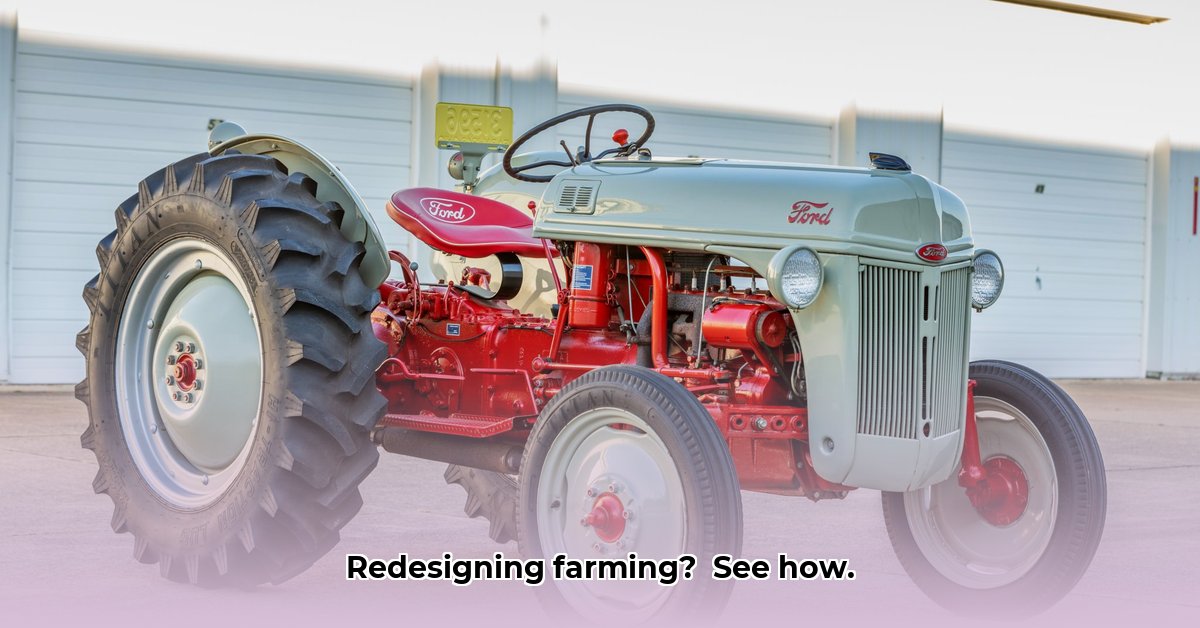
The 1947 Ford 8N tractor wasn't just another farm machine; it was a pivotal moment in agricultural history. Before its arrival, farming was laborious, relying heavily on manual labor and animal power. The 8N, however, democratized mechanized farming, making advanced technology accessible to a wider range of farmers and forever altering the agricultural landscape. This article explores its impact -- both positive and negative -- on farming practices and the broader societal shifts it engendered. For more detailed specifications, check out this Ford 8N resource.
A Simple Machine, A Giant Leap Forward
The 8N's revolutionary impact stemmed not only from its power but also its affordability. Unlike its more expensive contemporaries, the 8N was within reach of smaller farms, dramatically leveling the playing field. This accessibility spurred a wave of modernization, allowing smaller operations to compete and thrive in ways previously unimaginable. This democratization of technology empowered countless farmers, boosting their livelihoods and contributing to a more robust and equitable agricultural sector. But how significant was its cost-effectiveness compared to the established methods? Did this readily available technology truly lead to a better quality of life for all farmers?
Ingenious Design: The Three-Point Hitch and Beyond
The 8N's genius lay in its simplicity and efficiency. The three-point hitch system (a mechanism for attaching implements to the tractor) revolutionized fieldwork. Before its introduction, attaching and detaching implements was a time-consuming and physically demanding process. The 8N's quick-attach system dramatically reduced this labor, allowing farmers to accomplish more in a single day. This meant increased yields, higher profitability, and a more abundant food supply for a growing population.
Transforming Farming and Society: A Ripple Effect
The implications of the 8N extended far beyond increased farm output. Its efficiency played a crucial role in meeting the food demands of a post-war nation experiencing rapid population growth. This contributes to the long-term economic and social stability of the era. However, this technological leap wasn't without its drawbacks.
The Two Sides of Progress: Benefits and Drawbacks
The following table provides a balanced assessment of the Ford 8N's impact:
| Feature | Advantages | Disadvantages |
|---|---|---|
| Affordability | Increased access to mechanized farming for smaller farms. | Potential for higher long-term maintenance/repair costs. |
| Efficiency | Higher productivity leading to increased yields and profitability. | Job displacement in some rural areas. |
| Design Simplicity | Easier maintenance and repair, reducing downtime and specialist reliance. | Slower technological advancement compared to more complex designs. |
| Impact on Agriculture | Modernized farming practices, greatly increased food production. | Increased reliance on fossil fuels; potential for soil erosion. |
The increased productivity came at the cost of greater reliance on fossil fuels, highlighting an early challenge in the balance of agricultural efficiency and environmental sustainability. While boosting food production, it also contributed to the consolidation of farms, sometimes at the expense of smaller, family-run operations. The long-term sociological and environmental consequences are still being studied today.
How Did Ford 8N Tractor Impact Sustainable Farming Practices?
The Ford 8N's influence on sustainable farming is a complex subject, revealing both positive and negative impacts.
Increased Efficiency: A Double-Edged Sword
The tractor's efficiency undeniably boosted crop yields. However, its higher fuel consumption compared to modern tractors raises questions about sustainability. Furthermore, the increased traction required for plowing could lead to soil compaction, negatively impacting long-term soil health. This highlights the tension between short-term productivity gains and the long-term health of the land.
Community and Knowledge Sharing: A Sustainable Aspect
The 8N's mechanical simplicity fostered a spirit of community among farmers. Knowledge, repairs, and parts were readily shared, reducing waste and extending machine lifespans. This collaborative network echoes principles of sustainable resource management.
Legacy and Lessons: A Path Forward
The Ford 8N's legacy is a reminder that efficiency doesn't always equate to sustainability. The tractor's story underscores the critical need to balance productivity with environmental stewardship in modern agriculture. While it revolutionized farming, it also showcased the importance of considering the long-term effects of technological advancements on both the environment and society.
Key Takeaways:
- The Ford 8N's design significantly enhanced farming efficiency.
- Its ease of maintenance fostered community and resourcefulness.
- Concerns remain about its fuel consumption and potential for soil compaction.
- The 8N's legacy highlights the need to balance efficiency with environmental sustainability in agriculture.